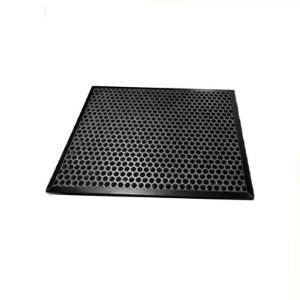source:Industry Trends release time:2023-10-26 Hits: Popular:led screen wholesaler

LED lamps used to replace standard incandescent lamps typically include an LED array to ensure uniform illumination. These LEDs are connected together in series. The brightness of each LED is determined by its current, and the forward voltage drop of the LED is approximately 3.4 V, typically between 2.8 V and 4.2 V. The LED light string should be driven by a constant current power supply, and the current must be strictly controlled to ensure high matching between adjacent LED lights.
In order for LED lights to achieve dimmable lighting, their power supply must be able to analyze the variable phase angle output of the thyristor controller, in order to make unidirectional adjustments to the constant current flowing to the LED. It is very difficult to achieve this while maintaining the normal operation of the dimmer, which often leads to poor performance. The problem can manifest as slow startup speed, flickering, uneven lighting, or flickering when adjusting the brightness of the light. In addition, there are also issues of inconsistency between components and unwanted audio noise emitted by LED lights. These negative situations are usually caused by factors such as false triggering or premature shutdown of the thyristor, as well as improper LED current control. The fundamental cause of false triggering is the occurrence of current oscillation during the conduction of the thyristor.
When the thyristor is on, the AC mains voltage is almost simultaneously applied to the LC input filter of the LED lamp power supply. The voltage step applied to the inductor can cause oscillation. If the current of the dimmer is lower than the current of the thyristor during oscillation, the thyristor will stop conducting electricity. Charge the thyristor trigger circuit and then turn on the dimmer again. This irregular multiple thyristor restarts can cause unwanted audio noise and flickering of LED lights. Designing simpler EMI filters can help reduce such unnecessary oscillations. To achieve successful dimming, the input EMI filter inductance and capacitance must also be as small as possible.
The worst condition for oscillation is a 90 degree phase angle (when the input voltage reaches the peak of a sine wave and is suddenly applied to the input terminal of the LED light), and a high input voltage (when the forward current of the dimmer reaches the lowest level). When deep dimming is required (such as a phase angle approaching 180 degrees) and the input voltage is low, premature shutdown will occur. To reliably lower the brightness, the thyristor must conduct monotonically and remain at a point where the AC voltage drops almost to zero volts. For thyristors, the maintenance current required to maintain conduction is usually between 8 mA and 40 mA. Incandescent lamps are relatively easy to maintain this current level, but for LED lamps with a power consumption of only 10% of the equivalent incandescent lamp, this current can be reduced below the thyristor maintenance current, causing the thyristor to turn off prematurely. This can cause flickering and/or limit the dimmable range.
Read recommendations:
rental led display screen manufacturer
advertising digital led screen price.What are the main types of LED display screens in shopping mall
p4.81 outdoor led screen.How to customize LED irregular display screens?